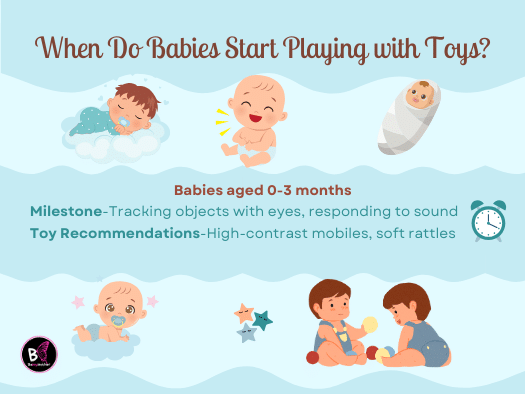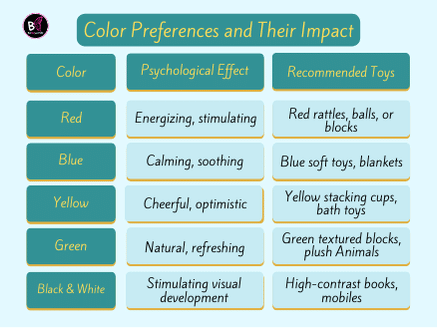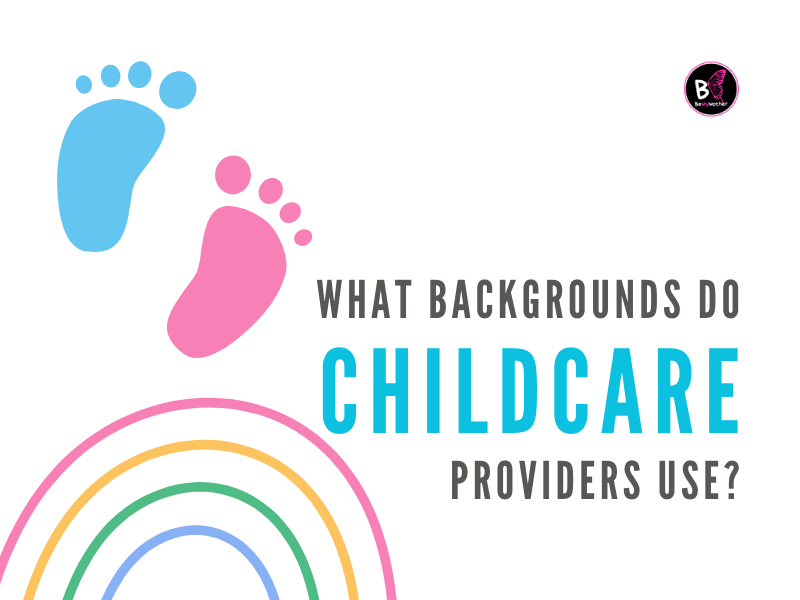📌 Quick Answer: Babies start interacting with toys as early as 2-3 months old when they begin responding to colors, movement, and textures. By 4-6 months, they actively grasp and explore toys, while at 6+ months, they start engaging in more interactive play, such as knocking over blocks or shaking rattles.
Introduction
Watching your baby discover the world through play is one of the most exciting milestones of early development. But when do babies start playing with toys? Understanding your baby’s sensory, motor, and cognitive development can help you choose the best toys at every stage.
In this article, we’ll explore when and how babies begin engaging with toys, the role of vision and color, and how toys impact early learning and movement.
1. When Do Babies Start Playing with Toys?

Babies begin interacting with toys at different stages, depending on their vision, motor skills, and cognitive growth.
| Age Range | Toy Interaction | Best Toy Types |
| 0-3 months | Observing movement, tracking objects | High-contrast toys, rattles, mirrors |
| 4-6 months | Grasping, shaking, chewing | Teething toys, soft plush toys |
| 6-12 months | Banging, throwing, problem-solving | Stacking cups, blocks, musical toys |
At around 6 months, babies start engaging with toys more meaningfully, such as knocking over blocks or cuddling a stuffed animal.
🔍 Research Insight: According to What to Expect, infants begin interacting with toys more meaningfully after six months, engaging in activities like knocking over blocks or snuggling with a teddy bear.
📖 Source: What to Expect
💡 Related Article: Recovering from childbirth while keeping up with your growing baby? Hernia After Pregnancy: 12 Crucial Facts Every New Mom Should Know explains how postpartum changes can affect your ability to play and interact with your little one.
2. The Science of Baby Vision: How Far Can Babies See?
A baby’s vision develops gradually, influencing how they interact with toys. Newborns can only see 8-12 inches away, so they respond best to high-contrast black-and-white objects. By 2-3 months, babies start focusing on bright colors and moving objects. As their vision improves, toys with lights, textures, and patterns become more engaging.
✔ At birth, babies can only see 8-12 inches away—just enough to recognize a caregiver’s face.
✔ At 2 months, they track moving objects and prefer bold, high-contrast colors.
✔ At 3-6 months, depth perception improves, and they recognize familiar objects, including toys.
🔍 Research Insight: Seattle Children’s Hospital notes that newborns can only see objects 8-12 inches away. As their vision improves, they become more interested in bright colors and simple toy designs.
📖 Source: Seattle Children’s Hospital
3. Color Psychology in Babies: How Colors Influence Play and Mood

Colors affect a baby’s mood, engagement, and cognitive stimulation. Newborns initially see only in black, white, and gray, while red is the first color they recognize. By 3 months, they begin distinguishing blue and yellow. Bright, bold colors encourage focus, curiosity, and excitement.
✔ 0-2 months: See in black and white with some gray shades.
✔ 2-3 months: Start distinguishing red, then blue and yellow.
✔ 4+ months: Begin recognizing a full spectrum of colors, preferring bright, high-contrast toys.
Bright, bold colors like red, blue, and yellow stimulate brain development, while soft pastels promote calmness.
4. Do Boys and Girls React Differently to Toys and Colors?
Toy selection influences cognitive and emotional development, so offering diverse toys that encourage exploration of various skills is crucial. Avoiding gender stereotypes allows children to develop without limitations.
✔ Research suggests that boys may prefer cooler colors (blue, green), while girls may be drawn to warmer tones (red, pink, purple).
✔ Studies indicate that toy selection impacts cognitive and emotional growth, with puzzles, blocks, and interactive toys benefiting all children equally.
Nature vs. nurture? While some differences exist, marketing and social conditioning play a significant role in gender-based toy choices.
5. When Can Babies Hold, Grasp, and Chew on Toys?
Baby Toys 0-3 Months: The Only 4 Toys You Need!
Hand-eye coordination develops rapidly in the early months. By 4 to 6 months, babies hold, grasp, and manipulate toys more effectively, opening new play possibilities. Safe teething toys become important as babies explore through their mouths. Easy-to-grip toys, like soft balls, improve grip strength. Providing varied toys that cater to developing motor skills builds confidence.
✔ 2-4 months: Babies begin grasping and swatting at objects.
✔ 4-6 months: Improved hand-eye coordination allows them to pass toys from one hand to another.
✔ 6+ months: Babies enjoy teething toys, soft balls, and objects that make sounds when shaken.
💡 Related Article: Wondering how to soothe your little one’s sore gums during playtime? Is Celery Good for Teething Babies? 7 Surprising Facts Parents Should Know explores natural teething remedies and how they can complement safe toy choices for your baby.
6. How Toys Influence Cognitive and Motor Skill Development
Toys are essential tools for cognitive and motor development in infants.
✔ Sensory toys enhance brain growth.
✔ Interactive toys support language and communication skills.
✔ Stacking and movement-based toys improve fine and gross motor skills.
🔍 Research Insight: A study published in PubMed Central highlights that play significantly contributes to cognitive, motor, and emotional development, with toys helping infants develop these skills through sensory experiences and interaction.
📖 Source: PMC
💡 Related Article: Passionate about early childhood development? What Is Required to Be a NYS Child Care Worker? 10 Key Steps to Unlock Your Dream Career offers insights into professional childcare requirements and how understanding baby milestones can enhance caregiving.
7. Learning to Crawl and Walk: How Toys Encourage Movement

Certain toys help babies learn to crawl and walk by promoting muscle strength and coordination.
✔ 6-9 months: Rolling balls, push toys, and soft tunnels encourage crawling.
✔ 9-12 months: Standing toys, activity tables, and walkers help babies pull up and balance.
🔍 Research Insight: A PMC study found that transitioning from crawling to walking improves environmental exploration, allowing infants to engage more socially and develop movement skills faster.
📖 Source: PMC
8. Safety and Age-Appropriate Toy Selection
When choosing baby toys, safety is the #1 priority.
✔ Look for: Non-toxic materials, rounded edges, and no small parts.
✔ Avoid: Choking hazards, lead-based paints, and rough-textured surfaces.
✔ Recommended first toys: Soft plush toys, rattles, stacking cups, and teething rings.
🔍 Research Insight: A study published in Infant Behavior & Development found that having fewer toys can enhance cognitive development by encouraging deeper engagement with each toy. This leads to more sustained attention, creativity, and problem-solving skills.
📖 Source: JCFC
💡 Related Article: Did you know some states provide financial support for parents caring for children with special needs? What States Pay Parents to Care for Disabled Children? 8 Shocking Unmissable Facts breaks down essential programs and assistance for families.
9. When Do Babies Start Recognizing and Responding to Toys?
Toy recognition involves visual and auditory development. Around 3 to 4 months, babies recognize familiar toys and reach for them intentionally, indicating memory and object permanence development. Babies also form emotional connections with toys. Sound, touch, and movement enhance recognition, making interactive toys engaging.
✔ Familiar shapes and colors.
✔ Sounds and textures.
✔ Movement and interactive features.
At 6+ months, they develop emotional connections with certain toys, such as a favorite stuffed animal.
10. The Role of Nighttime and Comfort Toys in Baby Sleep
✔ Soft toys and comfort objects can help soothe babies at bedtime.
✔ Safe sleep guidelines: Avoid loose blankets and stuffed animals in the crib before 12 months to prevent suffocation.
✔ Best calming toys: Soft plush animals, musical crib toys, and light projectors.
FAQ Section: Common Questions About Babies and Toys
Q1: When do babies start playing with toys?
A1: Babies start interacting with toys around 2 to 3 months, noticing movement and colors. By 4-6 months, they actively grasp, shake, and explore objects.
Q2: What are the best first toys for babies?
A2: High-contrast black-and-white toys, rattles, soft plush toys, and teething rings are best for newborns.
Q3: When do babies start recognizing toys?
A3: Around 3-4 months, babies recognize familiar toys and reach for them intentionally.
Q4: Can newborns sleep with stuffed animals?
A4: No. The AAP recommends keeping stuffed animals out of cribs until at least 12 months to prevent suffocation risks.
Q5: Why do babies chew on toys?
A5: Babies chew on toys to relieve teething discomfort and explore objects through oral sensory play.
Q6: How do toys help babies develop social skills?
A6: Interactive toys encourage babies to listen, mimic sounds, and engage in social play, fostering early communication skills.
Q7: When do babies start holding toys?
A7: Around 3-4 months, babies begin holding toys, developing hand-eye coordination.
Q8: What toys help babies learn to crawl?
A8: Rolling balls, push toys, and activity mats encourage movement and coordination.
Q9: What colors do babies prefer?
A9: Newborns prefer black-and-white patterns, but by 3 months, they respond to red, yellow, and blue.
Q10: How do toys influence baby brain development?
A10: Sensory and interactive toys stimulate brain growth, improve motor skills, and support early learning.
Conclusion
Babies begin playing with toys as early as 2 months, but their engagement and interaction grow over time. Choosing age-appropriate, safe, and stimulating toys helps support their cognitive, social, and motor development.
Now that you know when babies start playing with toys, you can confidently choose the right toys for your little one’s growth!



